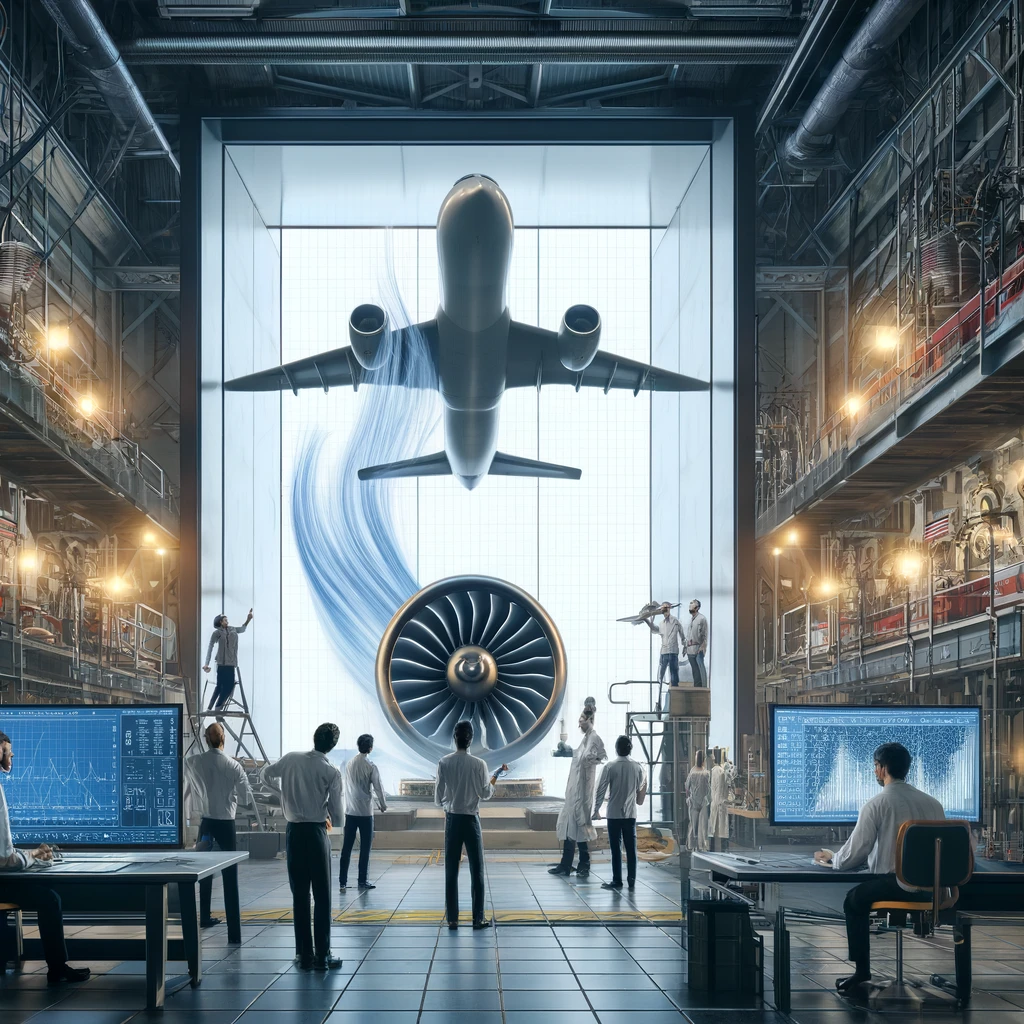The Crucial Role of Computational Fluid Dynamics in Aviation
Introduction: Advancing Aviation with Technology and Collaboration
In Aviation- The path toward aviation decarbonization is being paved with a mix of incremental and breakthrough technological innovations. Central to these advancements are efforts from leading European research entities such as Airbus, DLR (Deutsches Zentrum für Luft- und Raumfahrt), and ONERA (Office National d’Etudes et de Recherches Aérospatiales), which are spearheading improvements in aircraft efficiency through advanced computational fluid dynamics (CFD).
The Integration of Science and Innovation in CFD

CFD combines applied mathematics, physics, and high-performance computing to analyze airflow over aircraft surfaces. This analysis is critical for optimizing design to maximize lift and minimize drag, enhancing efficiency across various flight speeds and making it a key component in the development of eco-friendly aircraft.
Simon Galpin, Airbus’ Head of Aerodynamics, describes CFD as “where science meets art, a kind of computerized wind tunnel.” Galpin leads a dynamic collaboration that began five years ago with ONERA and DLR, aimed at developing next-generation CFD codes vital for advancing aerospace technology in aircraft, helicopters, and space systems.
Enhancing CFD through International Collaboration
Historically, DLR and ONERA have developed separate but essential computer codes for CFD applications. Recognizing the benefits of a unified approach, the partnership has re-engineered these codes for extreme-scale parallel computing platforms. This integration has produced a robust, industry-ready CFD code that enhances flow prediction accuracy and broadens its applicability across various aerospace applications.
In late 2022, these partners renewed their commitment to leveraging this sophisticated CFD code in forthcoming Airbus projects like ZEROe, EcoPulse, and the Open Fan initiative. These projects are already reaping the benefits, refining crucial aspects of propulsion, engine integration, and wing technology that will define the next generation of fuel-efficient aircraft.
Digitalization as a Catalyst for Aerospace Innovation
Dr. Markus Fischer, a Division Board Member for Aeronautics at DLR, highlights digitalization’s pivotal role in aviation innovation, stating, “Without comprehensive digitalization to speed innovation, decoupling air traffic growth from emissions would be unachievable.” The advanced CFD code enables specialists to quickly and accurately explore and validate more radical design concepts, such as flying-wing configurations.
CFD’s Broader Role in Enhancing Aviation Sustainability
Advanced CFD tools are indispensable not only for refining aircraft design but also for supporting the broader goals of aviation’s environmental strategy. By enabling more accurate simulations of aerodynamic phenomena, these tools reduce the reliance on physical prototyping, accelerating the development of efficient and high-performance aircraft.
Driving Emission Reductions through Improved Design
With a global focus on reducing carbon footprints, the aviation industry faces immense pressure to innovate swiftly. The enhanced CFD capabilities developed by Airbus, DLR, and ONERA foster a deeper understanding of aerodynamic efficiencies, directly contributing to lower fuel consumption and reduced emissions—a critical balance as the industry aims to meet stringent environmental targets.
Future Trends in Aerospace Engineering

Looking ahead, the integration of CFD with emerging technologies like artificial intelligence and machine learning is set to further revolutionize aircraft design and sustainability. These technologies enhance outcome prediction, optimize designs for minimal environmental impact, and significantly expedite the development cycle of new aircraft models.
Cultivating a Collaborative Innovation Ecosystem
The success of these advanced tools hinges on continued collaboration not only among entities like Airbus, DLR, and ONERA but across the global aerospace industry. Sharing insights, research, and technological advancements internationally is essential for achieving the decarbonization objectives of the industry.
Conclusion: Leading Aviation into a Sustainable Future
The combined forces of technology, creativity, and teamwork embodied by CFD research are redefining standards in aerospace design and operations. The initiatives spearheaded by Airbus and its partners are a testament to a commitment to sustainability-driven innovation, positioning the aviation industry at the forefront of an environmentally responsible future.

